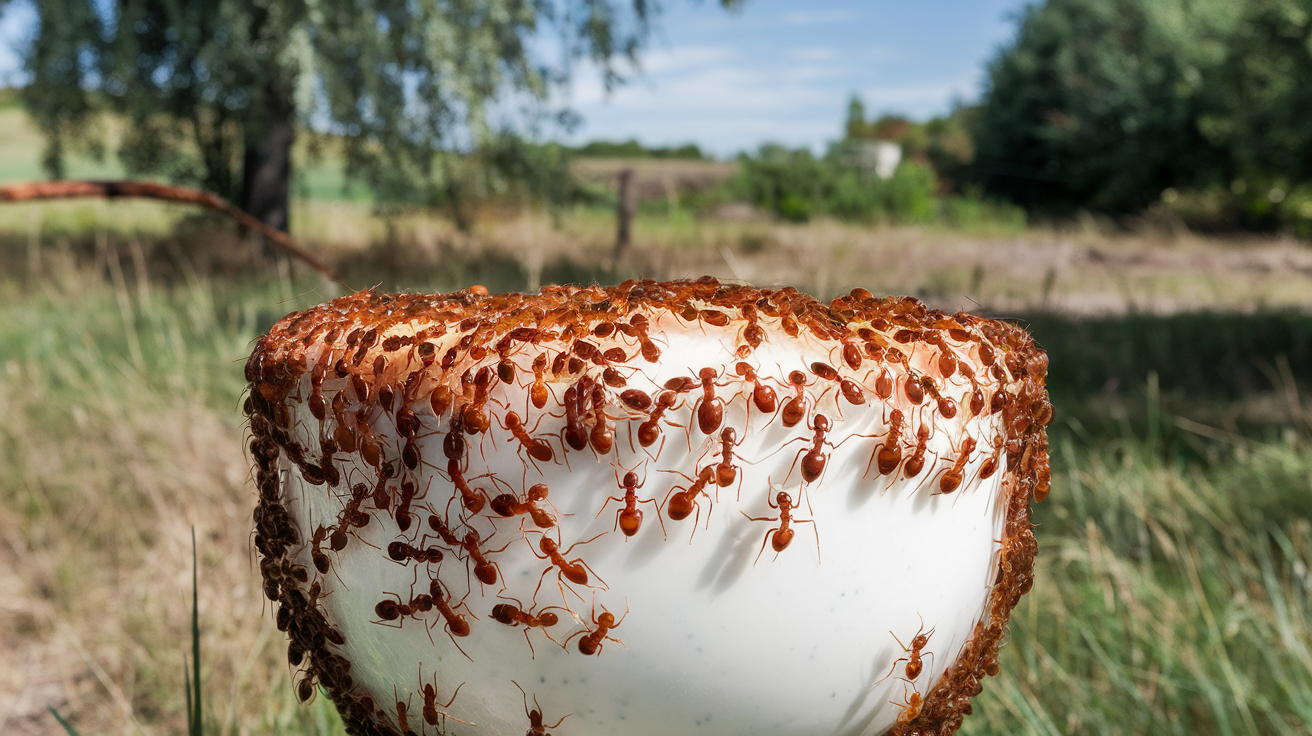The Unconventional Yogurt Ingredient: Live Ants
In a fascinating blend of nature and culinary tradition, researchers have uncovered that live ants are essential for crafting a unique and flavorful yogurt. A recent study published in iScience reveals that the microbes found on living ants are far more effective than those from frozen or dehydrated specimens in transforming milk into yogurt.
A Time-Honored Tradition in Eurasia
In regions of Eurasia, particularly Bulgaria and Turkey, the practice of using red wood ants along with their microbes to ferment milk has roots dating back approximately 7,000 years. Unlike modern methods that rely on a limited number of acid-producing bacteria, traditional yogurt-making techniques incorporate a diverse array of bacterial species, leading to a richer flavor profile.
Unique Methods of Yogurt Culturing
In Turkey, some communities have even experimented with unconventional ingredients like pinecones and chamomile flowers to start yogurt cultures. This variety not only enhances the taste but also reflects the rich cultural heritage surrounding yogurt production.
The Science Behind the Process
To initiate the fermentation process, researchers buried a jar filled with warmed raw cow’s milk and four live ants in an ant mound overnight. The warmth generated by the ant colony acted as a natural incubator, facilitating the fermentation process. By morning, the mixture had transformed, resulting in a tangy yogurt-like consistency.
The Role of Ants and Their Microbes
Analysis revealed that the red wood ants, specifically Formica rufa and F. polyctena, harbor essential bacteria that produce lactic and acetic acids, crucial for thickening milk. These bacteria include Fructilactobacillus sanfranciscensis, a species also present in sourdough fermentation. Additionally, the ants contribute formic acid, which serves as a chemical defense mechanism.
Safety Considerations
While the study highlights the efficacy of live ants in yogurt-making, it also raises concerns. Live ants may carry parasites that can lead to liver or gastrointestinal diseases in rare instances, cautioning against home experimentation with this ancient method. Veronica Sinotte, a microbial ecologist from the University of Copenhagen, emphasizes the importance of safety in food production.
Comparing Traditional and Industrial Yogurt
Industrial yogurt production ensures a consistent product that is safe for consumption, but it often lacks the unique flavors found in homemade varieties. Individuals familiar with traditional yogurt-making techniques can often distinguish between different yogurts, attributing specific tastes to the maker’s unique process, a testament to the skill and tradition behind each batch.
A Unique Culinary Journey
The intersection of biology and culinary arts through the use of live ants in yogurt-making offers a glimpse into ancient practices that still hold relevance today. While modern methods prioritize safety and efficiency, the rich flavors and diverse microbial communities of traditional yogurt production present an intriguing alternative for those willing to explore this fascinating culinary tradition.
